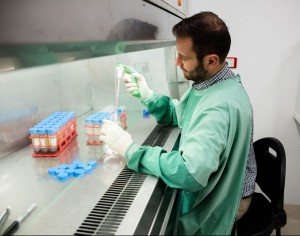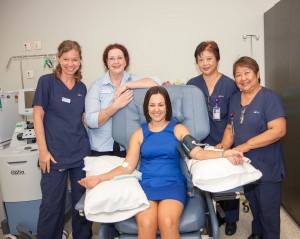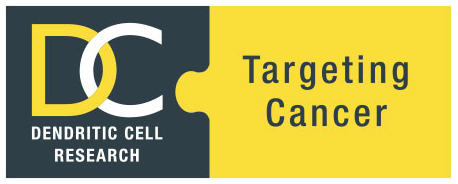Around 35 Australians are diagnosed with a blood cancer every day – this includes leukaemia, lymphoma and myeloma.
Blood cancer is the third biggest cause of cancer death across Australia.
LEUKAEMIA
Leukaemia is the general name given to a group of cancers that develop in the bone marrow. Leukaemia originates in developing blood cells that have undergone a malignant change. This means that they multiply in an uncontrolled way and do not mature properly, leaving them unable to function as they should.
Most cases of leukaemia originate in developing white cells. In a small number of cases leukaemia develops in other blood-forming cells, for example in developing red cells or developing platelets. Leukaemia can also be either myeloid or lymphocytic. The terms myeloid and lymphocytic refer to the types of cells in which leukaemia first started. Myeloid stem cells develop into red cells, white cells (neutrophils, eosinophils, basophils and monocytes) and platelets. Lymphoid stem cells develop in tow other types of white cells called T-lymphocytes and B-lymphocytes.
Leukaemia can be either acute or chronic. People with acute leukaemia, the diseased bone marrow produces an excessive number of abnormal blast cells, called leukaemic cells. These cells accumulate in the bone marrow interfering with the production of normal blood cells. Acute leukaemia develops and progresses quickly and therefore needs to be treated as soon as it is diagnosed.
In chronic leukaemia there is an accumulation of mature but abnormal white blood cells that have undergone a malignant change when developing from a blast cells. Chronic leukaemia progresses more slowly than acute leukaemia and may not require treatment for a long time after it is diagnosed.
ACUTE MYELOID LEUKAEMIA
Acute myeloid Leukaemia (AML) is a type of cancer that affects the blood and bone marrow. AML is not a single disease. It is the name given to a group of leukaemia’s that develop in the myeloid cell line in the bone marrow. Myeloid cells are red blood cells, platelets and all white blood cells excluding lymphocytes.
AML is characterised by an overproduction of immature white blood cells, called myeloblasts or leukaemic blasts. These cells crowd the bone marrow, preventing it from making normal blood cells. They can also spill out in the bloodstream and circulate around the body. Due to their immaturity they are unable to function properly to prevent or fight infection. Inadequate numbers of red cells and platelets being made by the marrow can cause anaemia, easy bleeding, and/or bruising.
Acute myeloid leukaemia is sometimes called acute myelocytic, myelogenous or granulocytic leukaemia.
Each year in Australia around 900 people are diagnosed with AML. Overall AML is a rare disease, accounting for 0.8% of all cancers diagnosed, at a rate of 3.7 per 100,000 of population.
LYMPHOMA
Lymphoma is a general term of cancers that develop in the lymphatic system. The lymphatic system is made of a vast network of vessels (similar to blood vessels) that branch out into all the tissues of the body. These vessels contain lymph, a colourless watery fluid that carries lymphocytes, B-lymphocytes and T-lymphocytes (also called B-cells and T-cells). These cells protect us by making antibodies and destroying harmful mirco organisms such as bacteria and viruses.
Reference: Leukaemia Foundation www.leukaemia.org.au
Current Statistics
1 in 30
Australians give blood each year (3%)
29,000
Australia needs more than 29,000 donations every week
1 in 3
Australians will need blood or blood products in their lifetime
34%
of donated blood is used for cancer and blood diseases
1 = 3
One blood donation can save up to three lives
Reference: Australian Red Cross Blood Services www.donateblood.com.au
Blood donor requirements for research projects
Research scientists need donated blood to investigate the causes of blood-related diseases.
The donor requirements for medical research may be slightly different from those for blood service donors, depending on the research project. For example, people with bleeding disorders or people who are taking blood-thinning medications are not usually able to participate in a research project that studies healthy platelets.
People who usually don’t qualify as blood service donors sometimes qualify as donors for medical research, depending on the project. All donors must be 18 years or over.


How you can help our research
If you are interested in donating blood for our medical research at Concord Repatriation General Hospital, you can email Elizabeth Newman (elizabeth.newman@health.nsw.gov.au) or call her on 9767 5706.
Mention that you would like to contribute to Dendritic Cell Research. Elizabeth will then provide you with an information form, which outlines the purpose of the research and you are given a consent form to sign.
The blood collection procedure is safe and is performed by a qualified scientist, nurse or doctor. It takes about 20 minutes.
The amount of blood taken depends on the needs of the research project. The maximum amount is 400 ml. Your body needs only a couple of days to replace this volume.
Depending on the amount of blood taken, you can donate again within three months. Most people can donate regularly.
Your name and contact details are kept on a database in case you would like to give future donations.
If you have a complain about any aspect of the research, you can contact the Sydney Local Health District Human Research Ethics Committee at slhd-concordethics@health.nsw.gov.au
